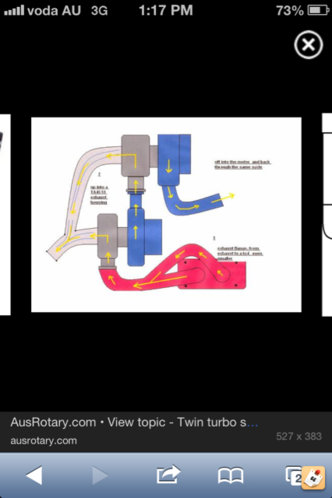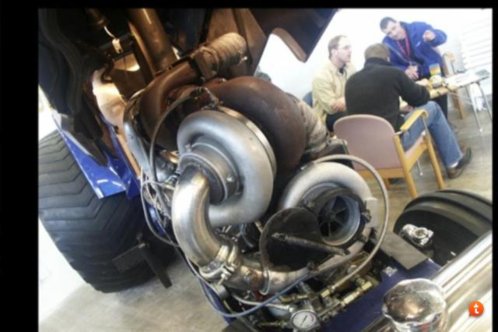Found this pic from a rotary forum. Obviously it would be 2 turbos feeding into the larger turbo.
How would that layout go if a fuel injection system was added between the small and large turbo, creating a turbojet engine power for the larger turbo
The guy who sold me my legnum claimed that some people in NZ had moved the battery to the boot and set up a third turbo sequentially to kick in at higher revs. Don't know if he was actually talking out his ass, I haven't found any evidence of it online.


